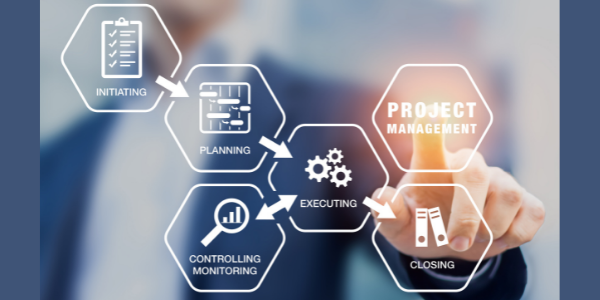Critical Skills Needed for Project Success
Part 1 – Elicitation
This article is the first in a series I’ll be writing about critical skills that all project managers (PMs) and business analysts (BAs) need for success. We need these skills regardless of the type of project we’re on, the industry we’re in, the technology we use, or the methodology we follow. Each of these skills requires a combination of what are commonly called hard skills with those needed to work effectively with others.
This first article is about elicitation. It seems easy. After all, what’s so difficult about asking stakeholders questions? Elicitation, of course, is far more than the questions we ask. When all is said and done, it’s about learning. We learn what our stakeholders want, what they need, and hardest of all, what they expect by asking really good questions and listening to what they have to say with great attention. It’s tricky, though. We can’t do what I did early in my career when I tried to develop a list of requirements by introducing myself and asking what the stakeholders’ requirements were, what they really needed, and what they expected by the end of the project. Simply put, we won’t learn enough to create an end product that they’ll be happy with.[i]
What makes the elicitation process so hard? Here are several pitfalls.
Advertisement
[widget id=”custom_html-68″]
Common Pitfalls
#1 – Missed expectations
Expectations are requirements, but they’ve never been stated. Therefore, we cannot get expectations by asking about them. Our stakeholders don’t think to mention them, and we don’t think to ask about them. I didn’t know about hidden requirements early in my career when I asked the questions like those noted above. Another problem– my focus was specifically on the future state solution. I asked for the features and functions, documented them, and got stakeholder approval. Then the development team built the final product according to the specifications with the inevitable result—a lot of stakeholder complaints.
#2 – People fear the future state.
This major pitfall is hard to overcome for many reasons. Some stakeholders are comfortable with their current state and don’t want to learn or train on the new processes and automation. Others are concerned for their jobs. Still others have a stake in the existing ways – perhaps they were part of its development or a known expert on its use. Whatever the reasons, the fear of the future state can make elicitation difficult.
#3 – The time trap
Many of us are often under so much pressure that we don’t have time to dig deep. We gather some high-level requirements, but we don’t have time to uncover the expectations. And even if we have time, which is rare, many of our stakeholders don’t. Many are available for an initial set of sessions, but interest wanes as the difficult detailed meetings drag on.
So, what can we do? Here are 3 tips for successful elicitation.
Tips for Successful Elicitation
Tip #1 – Use a variety of elicitation techniques
The first tip for uncovering expectations is to use a variety of elicitation techniques. That’s because each technique that we use uncovers a different aspect of the requirements. Here are some examples.
- Process modeling. This has always been one of my favorite techniques. It documents how people get their jobs done. But as with all elicitation, it’s not easy. For example, one of the most difficult aspects about process requirements is that stakeholders argue over where to begin and where to end and how the processes fit together. Using different process models helps avoid this contention. SIPOCS (suppliers, inputs, process, outputs, customers) help narrow the scope of each model and swim lane diagrams help visualize how the processes fit together.
- Data modeling. Process modeling is great, but people need information to get their work done. Data modeling helps us figure out what information supports each process step. It also provides business rules and is invaluable on our AI initiatives.
- Use cases. These models help us understand how our stakeholders want to use the final product. They provide not only the scope, but all the functionality of the solution. And use cases, if completed thoroughly, turn into test cases.
- Prototypes show what the final solution will look like.
- Brainstorming yields the power of the group, while one-on-ones often reveal what stakeholders really think.
Tip #2 – Ask context questions
A context question is one that surrounds the solution that we’re building. While we do need to ask questions about the solution’s features and functions, such questions do not provide the complete picture.
I like to group context questions into four categories of questions:
- These questions relate to what’s happening outside the organization and include questions like demographics, language, weather, technology, and compliance/regulatory. These may or may not apply to the project. If they do, we need to understand their effect on our work.
- These pertain to how ready the organization is to accept the final product. The bigger the change, the more issues there usually are. We need to know, for example, which stakeholders will be on board, which will resist the change, and what needs to be done to prepare the organization for the change.
- We need to ensure that the business problem we’re solving and the proposed solution align with the organization’s goals and objectives.
- These context questions are usually those about the current state.
Tip #3 – Know when to use open-ended, closed-ended, and leading questions
Open-ended questions allow the respondents to expand their thoughts. We ask open-ended questions any time we want to learn more. For example, we ask these questions when we’re just beginning an effort, during brainstorming, and when we need to get all the issues out on the table, etc.
Closed-ended questions are forced-choice questions. They have the answers embedded in the question itself, sometimes explicitly as in a survey question, or implicitly. I like to ask closed-ended questions when stakeholders are all over the board and we need them to focus. For example, given all these issues we’ve identified, if you had to choose 10, which would they be?
Leading questions are not questions at all. They sound like questions, but they’re really our opinions stated in the form of a question. “This is a pretty cool feature, isn’t it?” My least favorite leading question is one we often hear: “Have you ever thought about…solution.” Again, it’s not a question. It’s us presenting our opinion rather than asking what our stakeholders think. What’s wrong with that? Remember we’re in the middle of elicitation, which is about learning. Presenting our solutions during elicitation cuts off exploration because we’re telling rather than learning. Later, after we’ve completed elicitation and analysis, whether it’s for the whole project or a smaller part, we can make a thoughtful recommendation.
To summarize, effective elicitation is critical to the development of a final product that our stakeholders are happy with. Elicitation is not easy. There are several pitfalls which are difficult to overcome. But if we follow the tips provided in this article, we will deliver a product that our stakeholders actually like and want to use.
[i] I use the terms solution, final product, and end product synonymously. It’s the solution to the business problem we’re solving. It’s also the product or product increment being produced at the end of the project, project phase, or iteration.





